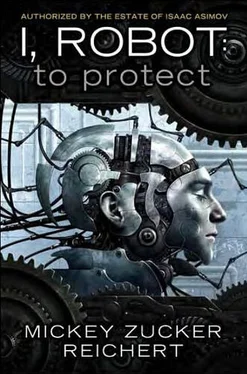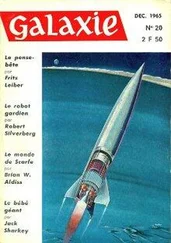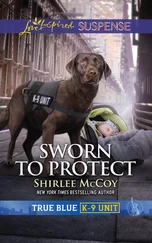“I don’t know.” Susan studied her fingernails. She generally kept them short, as most doctors did. A small amount of white protruded above the pink; they needed clipping again. “But someone Goldman and Peters thought came from the Society for Humanity knew I was involved in the project, as well as the general gist of it. He warned me away from ‘creating cyborgs.’ ”
“Hmm.” John Calvin’s discomfort became more apparent. He entwined his fingers and tapped the index ones together, a familiar, nervous gesture. “The study itself had to leave at least a small electronic trail. But confidentiality should have protected your patient’s identity.”
“Unless we have a mole of some kind. Either at USR or the hospital.” Susan considered further. “Or, maybe, they didn’t know. Maybe their recruiting our patient really is a coincidence.” Even as she spoke, Susan found the connection too unlikely to believe it an accident.
Her father made another thoughtful noise. “If it was deliberate, we’ll know soon enough. The SFH won’t let it go without publicity.” He shook his head, clearly flummoxed. “It’s not their style to release potential victims before activating a bomb. They’ve murdered ruthlessly in the name of their cause before, and a busload of flying corpses would have generated a lot more publicity.”
Susan shivered. The last comment struck too close to home. Hers would have been one of those flying corpses. “Maybe they instructed him to blow us up, but nonviolent Payton made the decision not to harm us all on his own. He might have been insane, but he still had a conscience.”
“Maybe.” John Calvin rose. “I’d like to make some inquiries and discuss this with some colleagues. I think you’re right about too many coincidences: A formerly peaceful schizophrenic with nanorobots in his system hijacks a bus, takes it right in front of USR, and blows it and himself to kingdom come.”
“In all fairness, he did it at one of the bus’ regular stops.”
John’s head jerked toward her. “You mean he kept making the stops? Why didn’t anyone get off?”
Susan laughed. “He drove past several stops before choosing that one.” That only bolstered her father’s theory. “I guess you’re right; he could have been targeting something in that area. Quite possibly USR.”
John Calvin twisted his lips thoughtfully. “Breakfast is in the microwave. Do you need anything before I go on Vox for some long conversations?”
Susan threw back the covers. “Nope. I’m going out myself.”
“Out?” Her father returned to her side. “Are you sure that’s wise? So soon after . . . what happened?”
“I’m fine,” she reminded him.
“Where are you going?”
“To the hospital.” Susan climbed out of bed and headed for her dressers.
“I thought you were forbidden —”
“From the unit, but not from the entire hospital. I have to visit Remy, and I’d like to talk to Goldman and Peters about our discussion.”
“Remy?” Concern etched John Calvin’s face. “Was he badly hurt?”
“Just a piece of . . . bus shrapnel in his shoulder, as far as I saw. But he shielded me from the explosion, and he may have taken some concussive forces. They wanted to observe him, at least overnight.”
Opening the drawers, Susan tossed out a T-shirt and a pair of jeans.
John Calvin took the hint. “Good luck,” he said. “I’ll let you know if I find out anything.”
“Same,” Susan called out over her shoulder, closing the door behind him.
Susan Calvin and Remington Hawthorn burst into the first-floor charting room to find Nate pouring through medical records, his fingers flying over the palm-pross. He looked up as they entered, and his face split into a friendly, all-too-human grin. “Where have you been?”
“Trying not to get too blown up,” Remington answered facetiously. “And you?”
“I’m always somewhere in the hospital, here as often as not.” Nate rose to give Susan a welcoming hug and Remington a short handshake–high five combination. “What do you mean ‘trying not to get too blown up’?”
Remington pulled up his dress polo to reveal a wad of bandages enwrapping his shoulder. “I can show you the hole in my butt where they put the megacillin, too.”
Susan knew he referred to the shot of long-acting antibiotics the nurses had injected to keep the wound from festering, but she shook her head at his word choice. “Remy, no one wants to see your butt right now, thank you very much.”
Remington flushed. “It’s a long story, Nate. But first, I promised Susan could ask you a question. She has a theory she won’t share with me.”
“Yet,” Susan added. The idea had come to her while they discussed the possibility that the SFH had had a hand in the drama. Remington had drawn similar conclusions as her father, but Susan’s mind had taken it a step further. “Let’s say someone put a bomb in your hands, told you to hijack a glide-bus full of people, take them to U.S. Robots, and blow it up. What would you do?”
Remington gave Susan an uncomfortable look. Clearly, he did not understand the need to involve Nate in such a direct fashion.
Nate took his hands off the keyboard and sat back. His brow furrowed. “I’d research the blast area of the bomb. I’d take it on the bus and hijack it to a spot near U.S. Robots, but not close enough to seriously damage the building or any others. I’d let the passengers off and make sure they moved a safe distance away.” He shrugged. “Then I’d detonate the bomb.”
Remington’s face seemed to melt. He stared from Nate to Susan and back again. “No way. You guys worked this out in advance, didn’t you?”
Nate turned his head to look directly at Remington. “What are you talking about?”
Susan sat on one of the couches, folding her arms across her chest and trying not to look too smug. “Nate, can you explain why you would do it the way you just described it?”
Nate shrugged. “Law Number One states, ‘A robot may not injure a human being, or, through inaction, allow a human being to come to harm.’ I’d have to make sure the passengers, bystanders, and anyone in the buildings did not become harmed by the blast. Law Number Two says, ‘A robot must obey all orders given by human beings except where such orders would conflict with Law Number One.’ So, I’d have to blow up the bus itself.”
Remington sat up. “But doesn’t the Third Law state you have to protect your own existence?”
“It does,” Nate admitted, “except where doing so conflicts with the First and Second Laws. In this case, the directive to detonate the bomb would take priority over self-preservation, because the Second Law supersedes the Third Law.”
Remington’s head slowly moved to Susan. “Are you suggesting Payton Flowers released us from the bus because . . . he’s a robot?”
Susan screwed up her features, then shook her head. “Nate, do nanorobots also have to follow the Three Laws?”
Nate went silent for far longer than Susan could ever previously remember. As he was clearly thinking, neither of the humans disturbed him until he finally managed words. “The Three Laws of Robotics are the basis from which all positronic brains are constructed. Without them, there is no positronic brain, no thinking robot. U.S. Robots has made the Three Laws so essential to production, that such cannot be undertaken without them.”
“And the nanorobots?” Susan reminded him.
Nate shrugged. “I was not involved in their production.”
Remington sighed.
Susan smiled. “No. But I know someone who was.” She tapped her Vox to John Calvin’s number and opened the connection to everyone in the room.
Читать дальше












